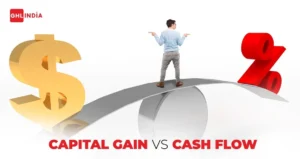
Distressed Property
What if ‘Distressed properties’ could relieve your financial stress? It might seem like wizardry, but it’s not. As humans, we all have expectations, whether emotional or financial. Our aspirations for the future and financial goals are increasing day by day, driven by personal ambitions or the desire to achieve a certain financial status in society.
It’s time to break free from societal norms regarding finances and focus on building your asset column , which generates income for you.
As the rich dad said, many of us mistakenly buy liabilities thinking they are assets. By understanding how to build our asset column correctly, we can break free from the Rat Race .
Do distressed properties fit into this strategy? Let’s explore what distressed properties are and how they can help grow our assets .
What is a Distressed Property?
Distressed property is a real estate asset because, despite their financial troubles, they are physical properties that can be bought and sold. This can occur when the owner is unable to maintain mortgage payments, leading to foreclosure, or when the property is in a state of disrepair. Distressed properties are often sold below market value , either through foreclosure auctions or short sales, presenting opportunities for investors to acquire properties at a discounted price.
For example: If you dream of owning a luxurious house within your budget, distressed properties are the best option. You can find houses worth 1 lakh for as little as 50,000 .

Types of Distressed Properties:
1. Foreclosures:
Foreclosures in distressed property happen when owners can’t pay their mortgages, so lenders take back the properties .so, These properties are sold to cover the debt, usually at lower prices . Investors can buy them, but they should research and understand the risks before investing.
2. Short Sales:
Foreclosures in distressed property happen when owners can’t pay their mortgages, Short sales in distressed property occur when the lender permits the property to be sold for less than the owner’s mortgage balance . This often happens if the property’s value has dropped, and the owner can’t cover the full amount. Short sales offer buyers a chance to purchase a property at a lower price, but lender approval is necessary .
3. Real Estate Owned (REO) Properties:
Real Estate Owned (REO) properties in distressed property are homes that the bank has taken back after they didn’t sell at foreclosure auctions. These properties are owned by the bank and are often sold at lower prices. However, buyers should be cautious of any problems or risks associated with these properties.
4. Auction Properties:
Auction properties in distress are homes sold at public auctions because owners had trouble paying or faced financial problems. They go to the highest bidder, often cheaper than usual, giving buyers a chance to grab real estate at a discount .
5. Probate Properties:
Probate properties in distressed properties are homes left behind by someone who has passed away . These homes are sold to settle their estate, often at a lower price . However, the process can be complicated and involve legal steps and t imeframes.
6. Distressed Sales:
Distressed sales in distressed properties are when owners sell because they’re having money problems or might lose their homes. These sales are usually at a lower price than normal to sell quickly and help the seller with their financial problems.

Benefits and Risks of Buying Distressed Properties
Buying distressed properties can offer several benefits, including:
1. Lower Purchase Price:
Distressed properties are often sold below market value, providing an opportunity for buyers to acquire property at a discounted price.
2. Potential for Profit:
With proper rehabilitation and improvement, distressed properties can increase in value, allowing buyers to sell for a profit.
3. Diversification:
Investing in distressed properties can diversify an investment portfolio, potentially reducing overall risk.
4. Rental Income:
Distressed properties can be purchased as rental properties, providing a source of passive income for buyers.
However, buying distressed properties also comes with risks, such as:
1. Property Condition:
Distressed properties may require significant repairs and renovations, increasing costs for buyers.
2. Ownership Problems:
Some distressed properties might have ownership problems, like outstanding debts or unpaid taxes, which can make buying them more complex.
3. Financing Challenges:
Traditional lenders may be hesitant to finance distressed properties, requiring buyers to seek alternative financing options with higher interest rates.
4. Market Volatility:
Overall, while buying distressed properties can offer potential rewards, buyers should carefully consider the risks and conduct thorough research before making a purchase. GHL helps you find great properties, paves the way for the best investment and handle risks to grow your assets. But how?
How does GHL India monetize this?
At GHL, we’re experts at making old, rundown properties into profitable investments . We focus on buying properties that are really wanted and usually only available to rich investors. We know how to buy these properties cheaply at bank auctions and a clique of real estate business clients, so we often make big profits. We make the properties more valuable by improving them, which makes their price go up a lot. On average, we make a profit of 60% annually on these investments . Our past success shows we’re good at finding great deals in the property market and generating substantial returns for our investors, contributing to the growth of their assets.

Lorem Ipsum is simply dummy text of the printing and typesetting industry. Lorem Ipsum has been the industry’s standard dummy text ever since the 1500s, when an unknown printer took a galley of type and scrambled it to make a type specimen book. It has survived not only five centuries, but also the leap into electronic typesetting, remaining essentially unchanged. It was popularised in the 1960s with the release of Letraset sheets containing Lorem Ipsum passages, and more recently with desktop publishing software like Aldus PageMaker including versions of Lorem Ipsum.




